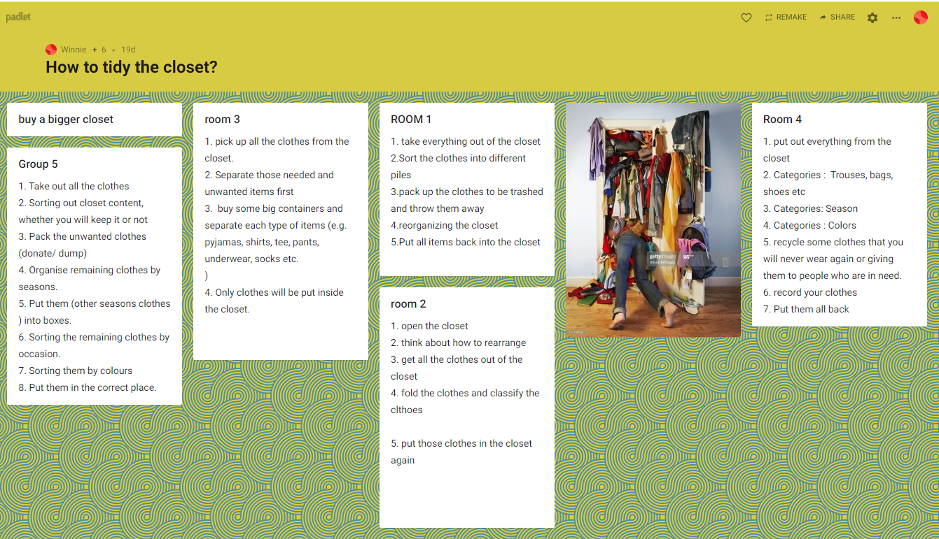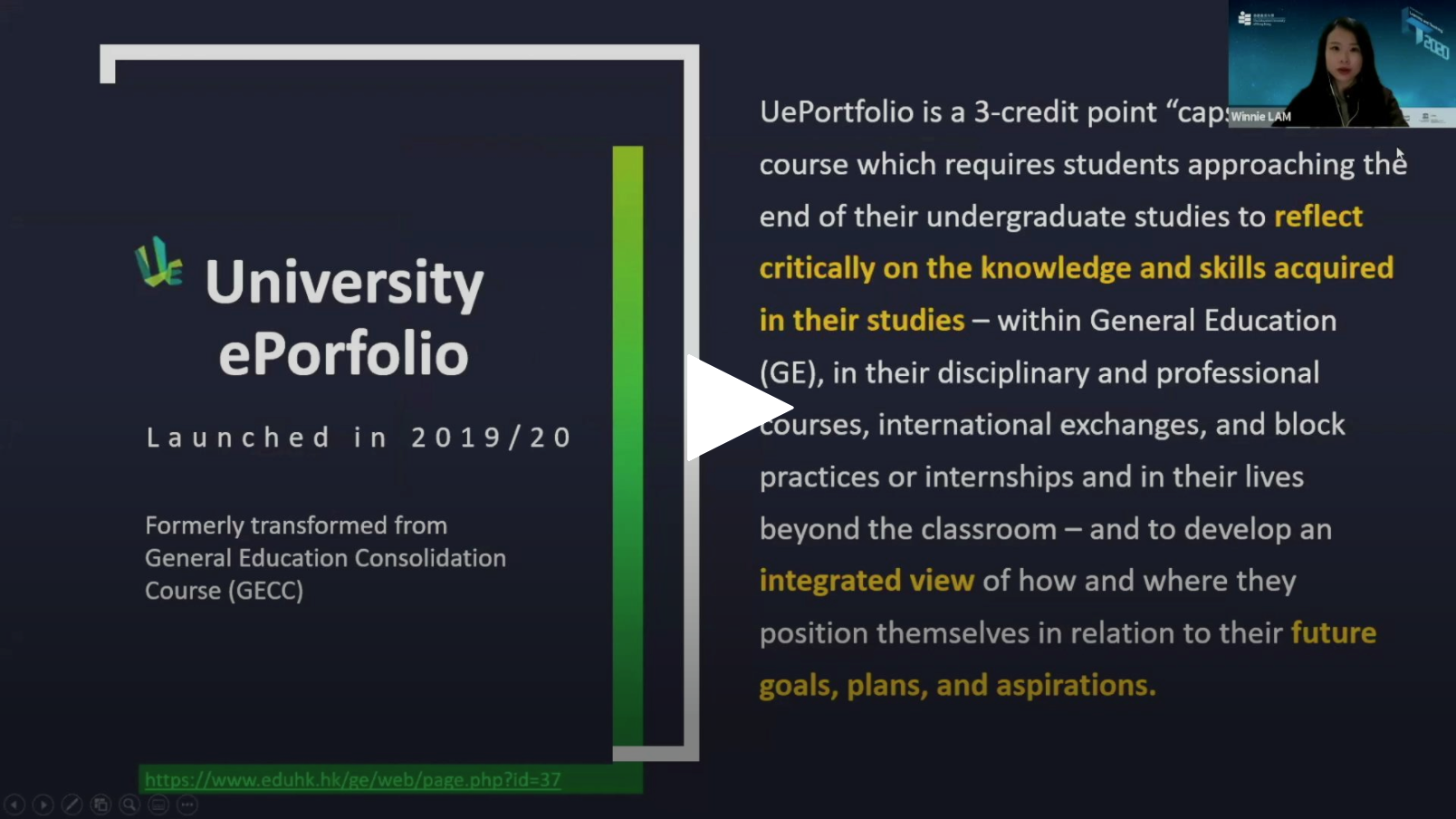Delivering the University ePortfolio Course:
Sharing by Dr. Winnie Lam
The University ePortfolio (UePortfolio) is designed to make visible the connection between students’ educational journey and their own identity formation as university graduates / young professionals. The course also aims to enlighten students about ways of developing as a university graduate engaged in lifelong learning and dedicated to living a worthy life.
Dr. Winnie Lam has taught this course for five semesters since Semester 2 in 2016/17. This article describes her innovative approaches to guiding students through these assessments as they develop their UePortfolios.
In this course, Dr. Lam uses Padlet as a tool for discussion. In one class exercise, she showed a picture of a messy wardrobe to her students.
She then asked her students how they would tidy up the wardrobe. Students discussed their ideas in groups and shared them on Padlet. Through this in-class online activity, students exchanged ideas such as donating unwanted clothes and sorting clothes according to season, colour or type. Dr. Lam then extended this activity to the processes involved in putting together an ePortfolio. For instance, to tidy up a messy wardrobe, it is necessary to take out items and re-organise them. Everyone has a different way of organising or prioritising items. Regardless of the strategy, you must select, trim, and maintain the collection based on certain principles. Creating a UePortfolio is a similar process – you must select a theme, consider which experiences are relevant and organise them in your own way, according to your priorities.
In this course, students write a reflective entry on Week 6 and create an individual ePortfolio towards the end of the course to document and reflect on their formal and non-formal learning experiences. Dr. Lam pointed out that the reflective entry is a first attempt at, or precursor to, the final ePortfolio. After students submit their reflective entries, they have an individual and a group consultation with the instructor. These consultation sessions allow the instructor to encourage students to share more about their individual experiences (a divergent process), and then the instructor can help students narrow these down to specific themes (a convergent process) by posing guiding questions, comparing and contrasting examples from students, reviewing and analysing particular experiences, etc. Furthermore, trial marking of previous exemplars during group consultation gives students a better understanding of the requirements and marking criteria.
Dr. Lam shared that in her past consultations, she used tracked changes and made comments on the Word document of the students’ reflective entry during the face-to-face meetings. In this way, each student had a reliable record of thoughts, elaborations, and inspiration to refer to after discussion. Students from Dr. Lam’s classes reflected that the Word document with comments was very useful, as it helped them to recall, rethink, and re-organise the feedback that they received in the consultation. Many studies have emphasised the value of timely feedback for improving students’ performance (Huxham, 2007; Lynam & Cachia, 2018). Researchers (e.g., Hennessy & Forester, 2013) have also found that combining audio and written feedback can increase its positive effects.
After the individual consultation, students present to the class the themes chosen for their ePortfolio and the proposed evidence to be used. During the presentation, other students conduct a peer review. The instructor provides keywords to guide and inspire them to write good reviews. A sample guiding question is, ‘What things did the student do well?’ Peer-reviewers are asked to choose from phrases such as “audible speech,” “relevant theme and content,” and “good organisation with ample and clearly presented evidence.” The guiding questions and keywords help students analyse their peers’ work and give practical feedback. Students can also practice and develop their critical thinking and communication skills by reviewing their peers’ work. In previous reflections, instructors, and students found that the process of sending and receiving feedback is a core learning activity that encourages students to expand, explore and examine their knowledge and thoughts. Tools for feedback exchange can be simple, as they can include any method that allows instructors and students to record and share feedback, such as a face-to-face sharing session or an online learning forum (e.g., Moodle Forum).
Reference
Hennessy, C., & Forrester, G. (2014). Developing a framework for effective audio feedback: A case study. Assessment & Evaluation in Higher Education, 39(7), 777–789.
Huxham, M. (2007). Fast and effective feedback: Are model answers the answer? Assessment & Evaluation in Higher Education, 32(6), 601–611.
Lynam, S., & Cachia, M. (2018). Students’ perceptions of the role of assessments at higher education. Assessment & Evaluation in Higher Education, 43(2), 223–234.



